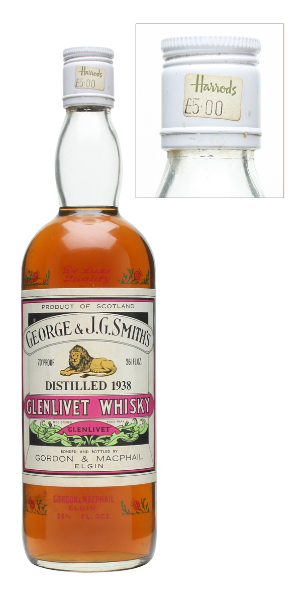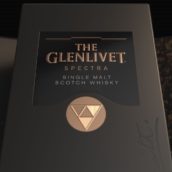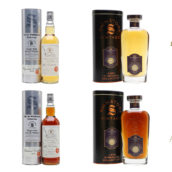There’s a lot of controversy that surrounds the topic of whisky investment, and we’re not going to get into an extended debate over the rights and wrongs of it as the issue comes up almost constantly and people tend to have their own entrenched opinions. But we recently acquired a bottle that proves that at least for some whiskies it’s definitely worked. We make no other claim than that.
Check this out: a 1938 Glenlivet, bottled by Gordon & Macphail no later than 1979. The price sticker attached to the cap proves that the original retail price for this bottle in the 1970s – in Harrods, no less – was a paltry £5. A fiver!

Two points of interest here:
1. According to the Bank of England’s inflation calculator, £5 in 1979 is the equivalent of just £21.42 in today’s money. Imagine being able to walk into Harrod’s (or anywhere else) today and buying a 30-something year old Glenlivet for £21.42. It’s pretty hard, isn’t it?
2. The current retail price of this bottle on TWE is £1750. If you invested a fiver in a UK FTSE 100 index tracking fund when it started in 1984, it’d be worth about £32 now. If you’d put your £5 in the bank in 1979, even with compound interest you’d have about forty quid now. That’s about eight times your investment – not bad, on the face of it.
But not as good as the whisky. If the original retail value was £21.42 in today’s money, the retail price of that bottle today is somewhere in the region of eighty times the original.
Not a bad increase, however you want to cut it.










 Enjoy responsibly
Enjoy responsibly
Recent Comments
Unfortunately, the answer is 'between 400g and 2000g per litre' :)
Posted on: 9 October 2024
What ratio of Sloe to gin is used, I see anything from 400 to 2000g of sloe to 1 litre of gin!
Posted on: 7 October 2024
What really makes Bob Harris' predicament in 'Lost In Translation' so absurdly funny is that he nailed it in one take, and the director just couldn't accept that.
Posted on: 11 January 2024